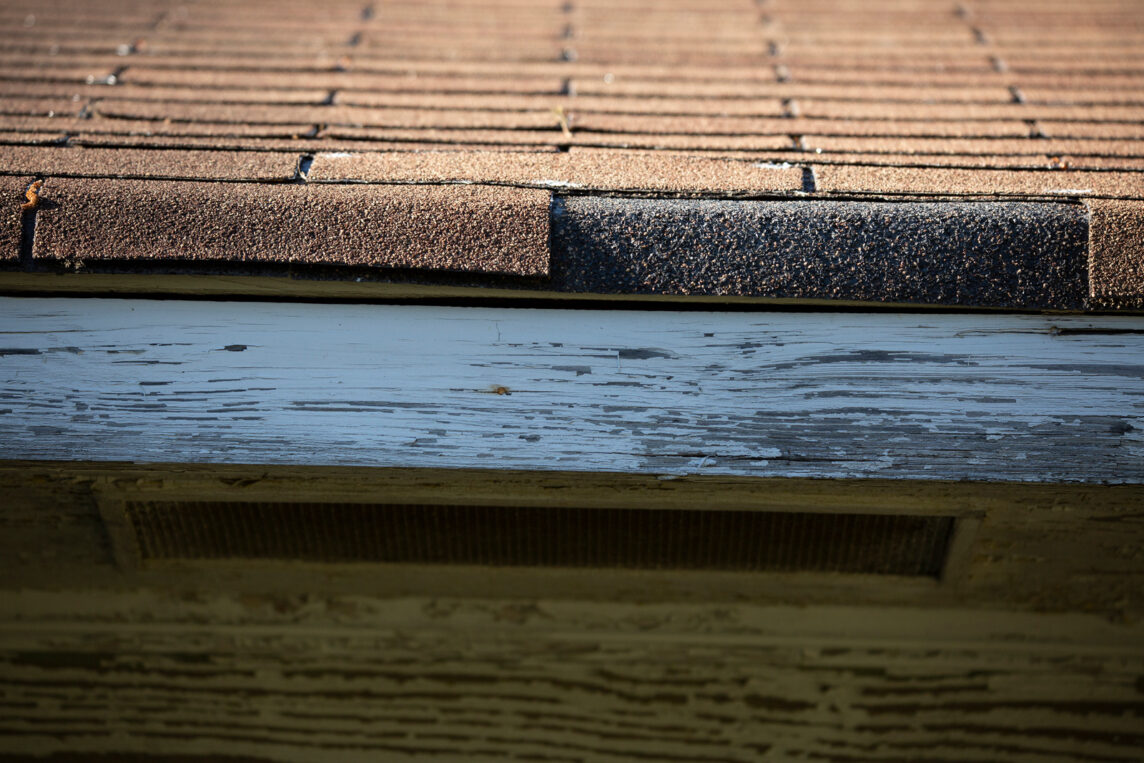When it comes to a properly functioning roof, every shingle counts! Even one missing shingle can cause problems and costly roof repairs. You might experience roof leaks and heat loss, as well as decreased curb appeal.
To avoid such issues, the most important thing to do is conduct regular visual inspections of your roof to assess the situation. Missing shingles are the most obvious thing to spot, but also pay attention to exposed nails and falling shingle granules – you might find some around your house or in the gutters.
So, why does this happen in the first place, and what’s the best thing you can do when faced with missing shingles? Continue reading to find out!
Wrong Installation and Poor Maintenance Practices
Roof shingles are typically installed in a multilayered design so that they overlap. This way, the top shingle covers the seams of the shingle below, which minimizes the chances of leaking. Not following these and other best practices of installation, along with the shingle manufacturer’s instructions, will often result in missing shingles.
A missing shingle will not immediately cause extensive damage, but it surely can spiral into severe exterior and interior problems. This is why it is very important to inspect and maintain your roof regularly.
Make sure you call a roofing professional to do a roof check-up once a year. The roofer will notice shingles that are ready to be strengthened or replaced, as well as weak and loose nails that might cause shingles to fall. Having an annual inspection will keep your roof in top condition.
Weather Exposure and Storm Damages
Since you can’t control the weather, there isn’t much you can do to prevent shingles from going missing during bad weather. But what you can do is pay close attention to your roof after storms.
Strong winds may rip the shingles from the roof and blow them off, and they are among the most common causes of missing shingles. Hail, on the other hand, may leave cracks and bruises on shingles, making them weaker and eventually also causing them to fall off.
Extreme temperatures are another reason why shingles may eventually fall off the roof. Significant or sudden temperature differences can actually make your shingles expand and contract, causing cracks and loosening the nails that hold the shingles on the roof. And once those nails come loose, the shingles won’t last much longer either.
Preventative roof inspections will always help keep your shingles in top shape and firmly attached to the roof. Still, sometimes, even the highest-quality shingles won’t be able to stand strong against Mother Nature. So, in case a shingle does fall off, the best thing to do is to call your roofer ASAP and fix the damage before it becomes worse.
Old Age
Over time, and as your roof nears the end of its life expectancy, it inevitably becomes weaker and prone to more frequent damages and failures. For example, roofs older than 25 years are very likely to sustain increased damages and start losing shingles.
Some of the warning signs that your roof is nearing its end and might start losing shingles are:
- Worn-off shingles that are losing surface granules
- Shingles are starting to curl
- Shingles are increasingly cracking
Along with these damages and missing shingles, roof leaks will inevitably develop – and more frequently than ever. So, to avoid the continued stress and costly repairs, the smartest thing to do in this case is to replace the entire roof with a new, quality one.
Do Missing Shingles Mean I Need a New Roof?
A few missing shingles do not necessarily mean you need a completely new roof right away. Sometimes, a roof repair will suffice, but other times, a roof replacement might be the only smart solution. In any case, consulting with a trusted local roofing contractor is the best first step.
Martin Exteriors offers a free roof inspection to assess the damage and recommend what roofing work needs to be done to keep you and your home safe. We will carefully replace missing shingles on your roof to maintain the value of your property, so get in touch with us and schedule your free roof inspection today!

